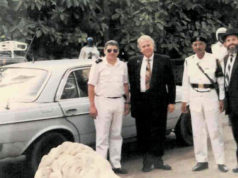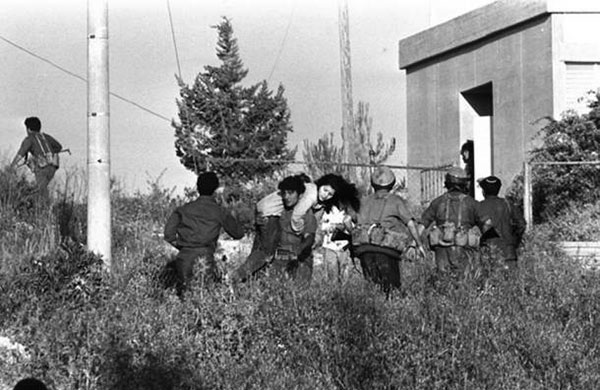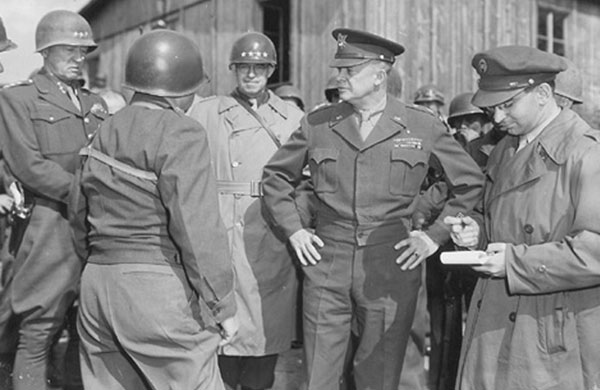 Judaism boasts many of the most influential minds in the past 2,000 years. When we read about what chazal says about a matter, the term refers collectively to the consensus of authoritative opinion. Chazal is an acronym of the Hebrew phrase chachameinu zichronam liv’racha, which means, “our sages of blessed memory” or “our sages, may their memory be a blessing.” In its strictest sense, chazal refers to the final opinion expressed in the Talmud, but the term is sometimes used more loosely to refer to the generally accepted opinion of any of the wise people who have contributed to Jewish law.
Judaism boasts many of the most influential minds in the past 2,000 years. When we read about what chazal says about a matter, the term refers collectively to the consensus of authoritative opinion. Chazal is an acronym of the Hebrew phrase chachameinu zichronam liv’racha, which means, “our sages of blessed memory” or “our sages, may their memory be a blessing.” In its strictest sense, chazal refers to the final opinion expressed in the Talmud, but the term is sometimes used more loosely to refer to the generally accepted opinion of any of the wise people who have contributed to Jewish law.
Hillel and Shammai
These two great scholars, born a generation or two before the beginning of the Common Era, are usually discussed together and contrasted with each other, because they were contemporaries and the leaders of two opposing schools of thought. The Talmud records over 300 differences of opinion between Beit Hillel (the House of Hillel) and Beit Shammai (the House of Shammai). In almost every one of these disputes, Hillel’s view prevailed.
Rabbi Hillel was born to a wealthy family in Babylonia, but came to Jerusalem without the financial support of his family and supported himself as a woodcutter. It is said that he lived in such great poverty that he was sometimes unable to pay the admission fee to study Torah, and because of him that fee was abolished.
He was known for his kindness, his gentleness, and his concern for humanity. One of his most famous sayings, recorded in Pirkei Avot (Ethics of the Fathers), is “If I am not for myself, then who will be for me? And if I am only for myself, then what am I? And if not now, when?”
Rabbi Shammai was an engineer, known for the strictness of his views. There’s a story in the Talmud which says that a gentile went to Shammai saying that he would convert to Judaism if Shammai could teach him the whole Torah in the time that he could stand on one foot. Shammai drove him away with a builder’s measuring stick! Hillel, on the other hand, converted the man by saying, “That which is hateful to you, do not do to your neighbor. That is the whole Torah; the rest is commentary. Go and study it.”
Rabbi Yochanan ben Zakkai
Rabbi Yochanan ben Zakkai was the youngest and most distinguished disciple of Rabbi Hillel. He has been called the “father of wisdom and the father of generations of scholars,” because he ensured the continuation of Jewish scholarship after Jerusalem fell to Rome.
According to tradition, ben Zakkai was a pacifist in Jerusalem when the city was under siege by General Vespasian. Jerusalem was controlled by the Zealots, people who would rather die than surrender to Rome. Ben Zakkai urged surrender, but the Zealots would not hear of it, so ben Zakkai faked his own death and had his disciples smuggle him out of Jerusalem in a coffin. They carried the coffin to Vespasian’s tent, where he emerged from the coffin. He told Vespasian that he had had a vision that Vespasian would soon be emperor, and he asked Vespasian to set aside a place in Yavneh (near modern Rehovot) where he could move his yeshivah (school) and study Torah in peace.
Vespasian promised that if the prophecy came true, he would grant ben Zakkai’s request. Vespasian became emperor and kept his word, allowing the school to be established after the war was over. The yeshivah survived and was a center of Jewish learning for centuries.
Rabbi Akiva ben Joseph
A poor, semi-literate shepherd, Rabbi Akiva became one of Judaism’s greatest scholars of the Mishnah, the earliest written form of the Oral Torah. He was the spiritual leader of the Bar Kochba Revolt.
He didn’t begin studying Torah until he was 40 years old. The death of 24,000 of his students constitute the traditional reason for the sadness of the Sefira, and the cessation of the plague on Lag Ba’Omer, the greatest cause for the happy nature of that day.
The Talmud tells us that he could look at utter devastation and see future glory. He and three of his colleagues gazed at the ruin of the Temple, and as they wept, Rabbi Akiva laughed. He explained, “Just as I see the tragedies foretold by the Prophets fully realized before my eyes, so I see in my mind’s eye the future realization of the Prophecies of Redemption foretold by the Prophets.” He died a martyr’s death, which he accepted with joy, seeing it as the fulfillment of the command to love G-d with his whole life.
Rabbi Judah Ha-Nasi
Rabbi Judah Ha-Nasi was well-educated in Greek thought as well as Jewish thought. He organized and compiled the Mishnah, building upon Rabbi Akiva’s work.
Rashi (Rabbi Shlomo Yitzchaki)
A grape grower living in Northern France, Rashi wrote the definitive commentaries on the Babylonian Talmud and the Bible. He pulled together materials from a wide variety of sources, wrote them down in the order of the Talmud and the Bible for easy reference, and wrote them in such clear, concise and plain language that it can be appreciated by beginners and experts alike. Almost every edition of the Talmud printed since the invention of the printing press has included the text of Rashi’s commentary side-by-side with the Talmudic text. Many Jews will not study the Bible without a Rashi commentary beside it.
Rambam (Maimonides; Rabbi Moshe ben Maimon)
A physician born in Moorish Cordoba, Rambam lived in a variety of places throughout the lands of Spain, the Middle East and North Africa, often fleeing persecution. He was a leader of the Jewish community in Cairo. He was heavily influenced by Greek thought, particularly that of Aristotle.
Rambam was the author of the Mishnah Torah, one of the greatest codes of Jewish law, compiling every conceivable topic of Jewish law in subject matter order and providing a simple statement of the prevailing view in plain language. In his own time, he was widely condemned because he claimed that the Mishnah Torah was a substitute for studying the Talmud.
Rambam is also responsible for several important theological works. He developed the 13 Principles of Faith, the most widely accepted list of Jewish beliefs. He also wrote the Guide for the Perplexed, a discussion of difficult theological concepts written from the perspective of an Aristotelian philosopher.
Ramban (Nachmanides; Rabbi Moshe ben Nachman)
Ramban was the foremost halakhist of his age. Like Rambam before him, Ramban was a Spaniard who was both a physician and a great Torah scholar. However, unlike the rationalist Rambam, Ramban had a strong mystical inclination. His Biblical commentaries are the first ones to incorporate the teachings of kabbalah.
Ramban could be described as one of history’s first Zionists, because he declared that it is a mitzvah to take possession of Israel and to live there. He said, “So long as Israel occupies the Holy Land, the earth is regarded as subject to Him.” Ramban fulfilled this commandment, moving to the Holy Land during the Crusades after he was expelled from Spain for his controversial thoughts. He found devastation in the Holy Land, “but even in this destruction,” he said, “it is a blessed land.”



